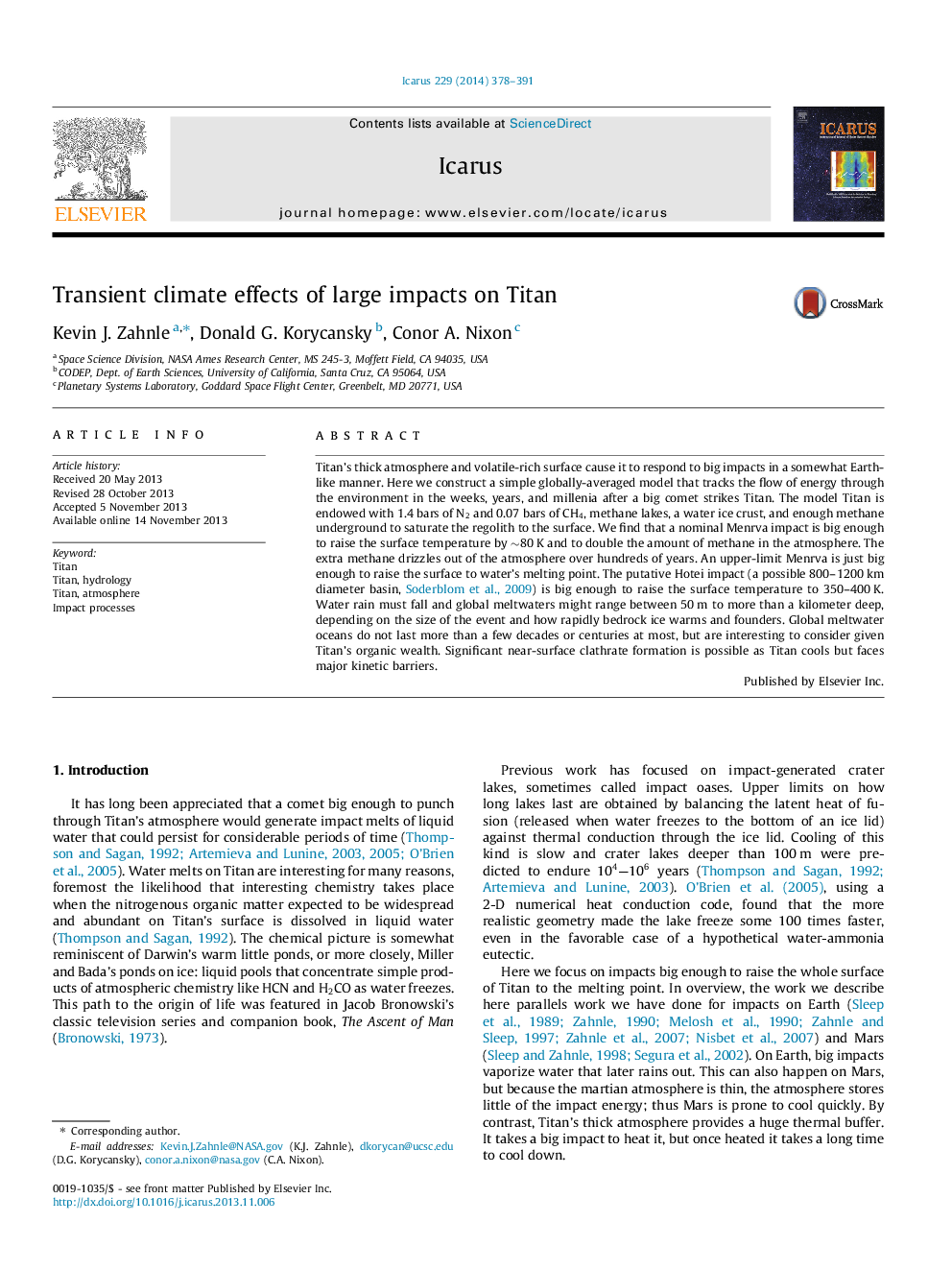| Article ID | Journal | Published Year | Pages | File Type |
|---|---|---|---|---|
| 8138982 | Icarus | 2014 | 14 Pages |
Abstract
Titan's thick atmosphere and volatile-rich surface cause it to respond to big impacts in a somewhat Earth-like manner. Here we construct a simple globally-averaged model that tracks the flow of energy through the environment in the weeks, years, and millenia after a big comet strikes Titan. The model Titan is endowed with 1.4 bars of N2 and 0.07 bars of CH4, methane lakes, a water ice crust, and enough methane underground to saturate the regolith to the surface. We find that a nominal Menrva impact is big enough to raise the surface temperature by â¼80Â K and to double the amount of methane in the atmosphere. The extra methane drizzles out of the atmosphere over hundreds of years. An upper-limit Menrva is just big enough to raise the surface to water's melting point. The putative Hotei impact (a possible 800-1200Â km diameter basin, Soderblom et al., 2009) is big enough to raise the surface temperature to 350-400Â K. Water rain must fall and global meltwaters might range between 50Â m to more than a kilometer deep, depending on the size of the event and how rapidly bedrock ice warms and founders. Global meltwater oceans do not last more than a few decades or centuries at most, but are interesting to consider given Titan's organic wealth. Significant near-surface clathrate formation is possible as Titan cools but faces major kinetic barriers.
Related Topics
Physical Sciences and Engineering
Earth and Planetary Sciences
Space and Planetary Science
Authors
Kevin J. Zahnle, Donald G. Korycansky, Conor A. Nixon,
